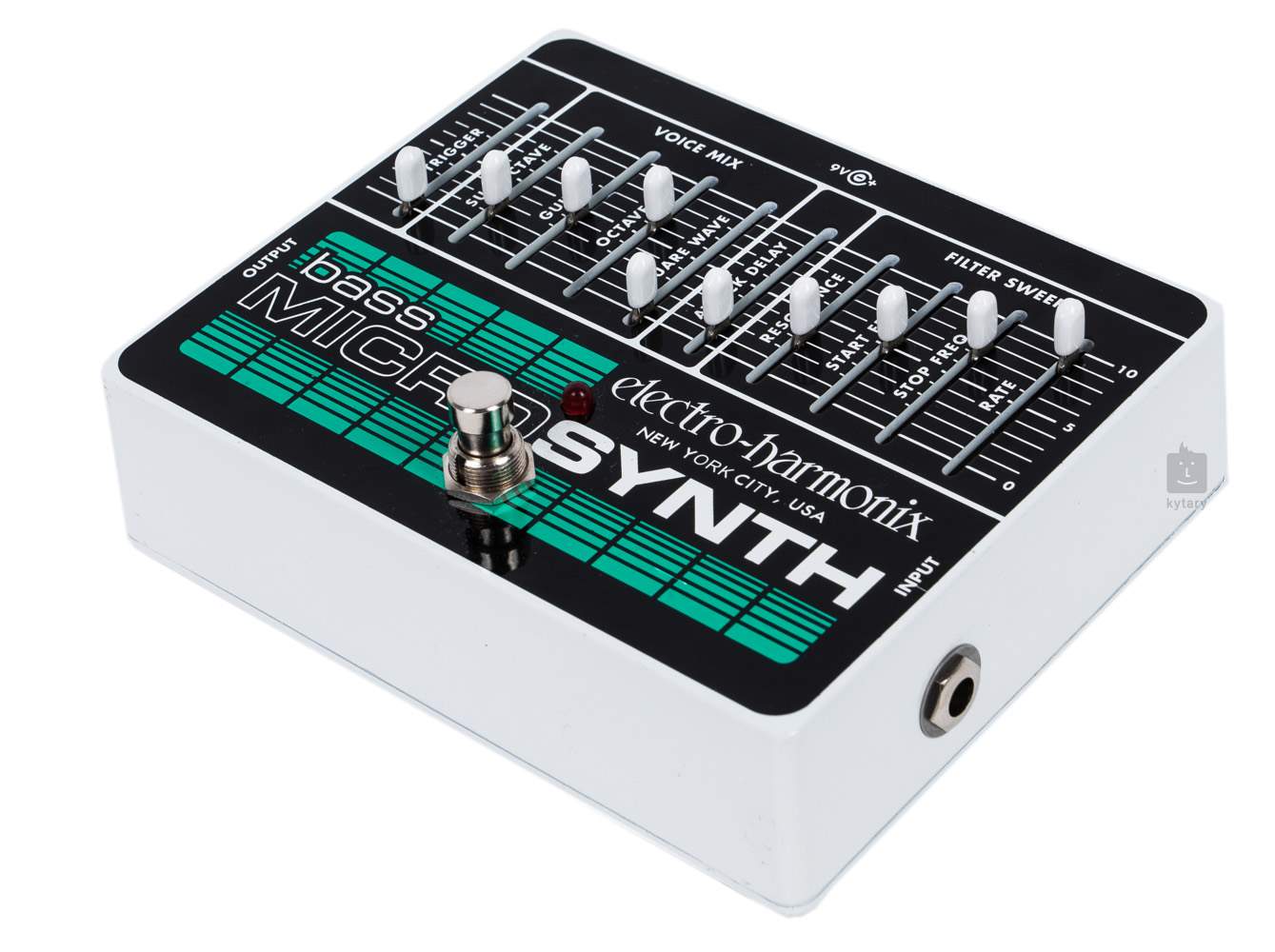

The Micro Synth Bass contains five major controls: The in-built preamp gain adjustment makes the pedal ideal for bass guitars equipped with passive, single-coil pickups, but worry not if you're using something else: the settings can be adjusted accordingly with a bit of elbow grease! (and a screwdriver). Accurately recreate many of the most popular analog lead synth textures at a cost that won't break the bank! Sculpts the voice of your bass to match your favourite Synth sounds! The same fat analog synth textures give your bass a whole new range of possibilities: from percussive stabs to backwards-sounding bowed sounds. The Bass Micro Synthesizer from Electro-Harmonix has the same feature set as the Micro Synthesizer, but includes a trigger and filter sweep range especially tailored for bass guitar. Therefore it is superior to the V2 and XO.EHX Micro Synthesizer Effects Pedal for Bass Guitar It has the great vintage tone that you would expect, a good bypass and good tracking of the notes. So if you care about your sound I warmly recommend you to get the V3 Reissue Micro Synthesizer. The square wave sounds very tame in comparison and does not give you that aggressive, raw, musical, vintage fuzz tone. But unfortunately, it sounds noticeably different. The bypass is also better than on the previous versions.
Electroharmonix bass microsynth plus#
The XO gets a plus point for its pedalboard-friendly size and the 9v connection. Unfortunately, I was not able to get my hands on a V1 Micro Synth yet. The V3 has also a much better tracking and bypass than the V2.Ĭompared to the XO both sound more raw and organic. It has a beefy low end and sounds very fat. But the sub-octave on the V3 is much more bass-heavy. The V2 and V3 versions have a lot in common. But there are some obvious differences if you compare them side by side. Playing the Micro Synth is fun no matter what version you have. I hope it helps you to remember your favorite settings! Vintage vs Reissue vs XO Micro Synthesizer I have made a Micro Synthesizer Setting Chart that I want to share with you. On the XO version, you have to open the backplate to access the trim pot. Turning the trim pot clockwise will increase the preamp gain and vice versa. If you are using an instrument with higher or lower output than a guitar with single-coil pickups you can adjust the preamp gain with a small screwdriver. On the back of the Micro Synth V1, V2 and V3 there is a hole to access the trim pot. The Start and Stop Frequency sliders determine the frequency at which the filter sweep starts/stops and the Rate sets how quickly the sweep occurs. The Resonance slider boosts the selected frequency and sets the degree of sharpness.
Electroharmonix bass microsynth full#
Sets the time required for the voice signals to reach full volume. Here you can control the completely independent output volume of the input signal, the Sub-Octave, the Octave and the Square Wave. The four sliders set overall “mix” of the voices. The Trigger slider determines the input volume at which the filter circuits will be triggered.ĭon’t set it too high, especially when playing chords because this will make the filter ‘stutter’. It is a complete redesign of the circuit and comes in a small metal case. The Micro Synthesizer XO is the newest version of the pedal. Because Panasonic discontinued the production of the analog chips Electro-Harmonix had to purchase the remaining supply for the reissue version and probably stopped the production when they ran out of them. It uses the same components as the original units. V3 is the Micro Synthesizer reissue and has a 24v wall wart. Like the original Micro Synthesizer, the V2 has a built-in power supply and came in a cardboard box. The V2 was the first version with an On/Off Switch on the backside and an LED. One for the basic circuit and another one that holds the sliders and links the controls to the mainboard. It uses two circuit boards mounted on top of each other (like the V2 and V3). In contrast to later versions, it had no LED and the square wave was labeled as distortion. It had no On/Off Switch on the backside and the Foot Switch was on the left side. The first Micro Synth was released in 1979. Please contact me if you have any information! V1 Micro Synthesizer 1979

There is only little known about the different versions of the Micro Synthesizer. It was inspired by the sound of the 1970’s analog synths like Moog, Arp, Oberheim, and others. The micro synthesizer creates different timbres by modifying the input signal into different circuits. It is an all-analog design that features a 4 voice mixer and a 2-pole filter. Like many of the great Electro Harmonix (EHX) pedals, the Micro Synthesizer was developed by David Cockerell.


 0 kommentar(er)
0 kommentar(er)
